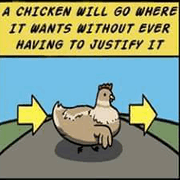|
GotLag posted:Newag is suing them.
|
|
|
|

|
| # ? May 9, 2024 09:51 |
|
Hyperriker posted:What's HEP? Head-end power, so the cars behind can have air conditioning and lights. It's a generator that runs independent of the unit that powers the traction motors. Without HEP, cars behind would need to be built with their own power generators to keep cool. NoWake fucked around with this message at 12:33 on Dec 15, 2023 |
|
|
|
Chenghiz posted:its cool and good that we basically use the same locomotive everywhere now They still haven't built as many SD70MACs as F7s, GP9s, GP38-2s, or SD40-2s.
|
|
|
|
Optimization isnít fun even if the result are good.
|
|
|
|
Metra did have a project to take a few old F40PHs, and replace the engines with batteries. That project almost got off the ground until a contract dispute with Progress Rail canceled it. Last I heard they were putting out a new RFP for the project.
|
|
|
|
TITTIEKISSER69 posted:Metra in Chicagoland has started using SD70MACH locomotives, which are rebuilds of the SD70MAC with the addition of HEP. They are six-axle units but the two axles nearest the fuel tank are inactive. Here's one on a test run, there are now four in revenue service, the initial delivery will be 15 units, with an option of up to 27 more: They've already exercised the first option, so they will get 24 units. Still TBD on the other two options of 9 each. In typical railroader fashion we have tried breaking them as much as possible but they haven't failed yet, just a bunch of nuisance faults that seem to be more related to the ancient cars that are still run in revenue. They pull as hard as an F40, which is a very good thing considering the F59PHIs Metra bought from Amtrak load very slowly and can hardly maintain the schedule due to all the short distances between stops. Strangely enough, the biggest factor affecting schedule is the time it takes to reach full horsepower, not the max HP available - the 3000HP F59PH locos will outrun a 3000HP F59PHI despite the fact they have the same prime mover just because of different programming. I can go a lot deeper into this if you all want me to  The SD70s will only stay on the Milwaukee district due to maximum bridge weight requirements on the other districts, or certain unnamed shops not wanting to bother with new units. There aren't any dicks drawn on the fuel tanks yet so I don't think the Western Ave shop has officially accepted them as their own.
|
|
|
|
Delta-P posted:The SD70s will only stay on the Milwaukee district due to maximum bridge weight requirements on the other districts, or certain unnamed shops not wanting to bother with new units. BNSF line is triggered.
|
|
|
|
Delta-P posted:the F59PHIs Metra bought from Amtrak load very slowly and can hardly maintain the schedule due to all the short distances between stops. Strangely enough, the biggest factor affecting schedule is the time it takes to reach full horsepower, not the max HP available - the 3000HP F59PH locos will outrun a 3000HP F59PHI despite the fact they have the same prime mover just because of different programming. I can go a lot deeper into this if you all want me to Surprised to hear that about the PHIs, and I would love to learn more so please feel free to post. Also, I thought I read that the MACHs would also go on the NCS line? And maybe one other, like the HC?
|
|
|
|
NoWake posted:Head-end power, so the cars behind can have air conditioning and lights. It's a generator that runs independent of the unit that powers the traction motors. Without HEP, cars behind would need to be built with their own power generators to keep cool. Neat, thanks
|
|
|
|
Talk nerdy to me
|
|
|
|
And if you know, please tell us why Metra love F40PHs.
|
|
|
|
Full Collapse posted:And if you know, please tell us why Metra love F40PHs. Somebody in a Metra group on FB said today that there's 20 years worth of spare parts for the F40PHs.
|
|
|
|
https://www.youtube.com/watch?v=ANl_MV-yZcE Watching this, it's honestly shocking how loud these commuter trains are. What is the purpose of the bell ? I can just about understand it's use in a rail yard, but here we see trains that are on their own track, yet ringing that bell. Also, it's purely esthetic, but are the hazard stripes really necessary ? In general, it seems to me that US rail regulations make trains seem more dangerous than they actually are, and therefore cause other problems, such as noise pollution. I mean, this is to me what a commuter train should sound like : https://www.youtube.com/watch?v=0F_cIM1Wb_g
|
|
|
|
Noosphere posted:Watching this, it's honestly shocking how loud these commuter trains are. Welcome to diesel! Electrification costs money, and the rail lines are already on threadbare budgets due to the drop in traffic since COVID. You might be thinking, ďWhy didnít they electrify with the rest of the world in the 1970sĒ, and my answer to that is gently caress you thatís why. Real answer is rail hasnít been prioritized for state and federal budgets since the national highways were built, so ďbare minimum spendingĒ is the standard. Noosphere posted:What is the purpose of the bell ? I can just about understand it's use in a rail yard, but here we see trains that are on their own track, yet ringing that bell. I believe thatís required by law for all trains arriving and departing a station. Noosphere posted:Also, it's purely esthetic, but are the hazard stripes really necessary ? You will take away the (probably unnecessary as you point out) Metra hazard stripes over my dead body.
|
|
|
|
Pendragon posted:Welcome to diesel! Electrification costs money, and the rail lines are already on threadbare budgets due to the drop in traffic since COVID. In college I lived in an apartment that backed onto the MBTA tracks. You get used to it (I shouldn't have, I was in goddamn music school but I also hung out with the death/sludge metal kids sooooooooo not making great long-term choices).
|
|
|
|
Noosphere posted:I mean, this is to me what a commuter train should sound like : https://www.youtube.com/watch?v=Nk1pO5kFOxw
|
|
|
|
I once read somewhere that Metra having hazard stripes on both ends came about after a collision in fog where one of the trains wasn't visible because it was grey.
|
|
|
|
They started on the Burlington line and the reasoning I read was to allow judging closing rate because of idiots who would run across the tracks.
|
|
|
|
Judging by what I see at stations the stripes donít stop them.
|
|
|
|
Well assuming you don't see them getting flattened too often maybe it does help with the judgement.
|
|
|
|
Noosphere posted:https://www.youtube.com/watch?v=ANl_MV-yZcE I like train horns as much as the next foamer but one thing that drives me nuts about US trains is how they seem to honk at every single level crossing. I was in Palo Alto on a work trip once and you would regularly hear Caltrain honking its way through the city late at night, even indoors a significant distance from the railway. No wonder Americans don't like trains. I mean, yes, level crossings are hazardous and are best avoided, but here the rule is that the train only needs to honk if the crossing has no barriers/gates (typically only a thing in very rural areas). If the crossing has gates then those do the signaling already so there's no need for a train horn. TheFluff fucked around with this message at 02:36 on Dec 17, 2023 |
|
|
|
Just keep the train on the street. No problems. https://www.youtube.com/watch?v=MmYAJ-tJsyA
|
|
|
|
The bell is required by Federal law for any train moving near persons on the road ground in the vicinity. Basically the same thing as the backup beep on a truck.
|
|
|
|
Sash! posted:The bell is required by Federal law for any train moving near persons on the road ground in the vicinity. Basically the same thing as the backup beep on a truck. Is it based on speed? Iíve been on passenger platforms when trains blast by at speed with no audible bell.
|
|
|
|
Full Collapse posted:Is it based on speed? Iíve been on passenger platforms when trains blast by at speed with no audible bell. It is a bit tricky because the actual rule is written in such a way that it technically only applies to when people can foul the track. I know they don't ring the bell on the NEC when blasting through a station they aren't stopping at. Presumably, they're interpreting the rule to mean that people aren't able to foul the track on a high level platform. On the other hand, I've heard Amtrak crews turn on the bell going past a low level platform they're not stopping at. It is easier for someone to foul from a low level platform.
|
|
|
|
Sash! posted:It is a bit tricky because the actual rule is written in such a way that it technically only applies to when people can foul the track. I know they don't ring the bell on the NEC when blasting through a station they aren't stopping at. Presumably, they're interpreting the rule to mean that people aren't able to foul the track on a high level platform. On the other hand, I've heard Amtrak crews turn on the bell going past a low level platform they're not stopping at. It is easier for someone to foul from a low level platform. As a counterpoint, I can confirm that the Northeast Regional trains don't turn on the bell when going by the low level platform I commute from, but do turn it on when stopping. I don't know what the Acela does because it's only ever stopped at that station once that I've seen, and that's because trains were backed up for miles after a bomb threat at the main station in the city. I have no idea what the actual rules are supposed to be, but in practice it seems to be only turn on the bell if the train is moving slow. To make things even more confusing, there's a CSX line near where I live with absolutely no level crossings at all anywhere nearby that usually doesn't have the bell on, but does sometimes. Usually, again, when moving slowly - even though the ROW is fenced off and essentially inaccessible to anyone that doesn't work for the railroad.
|
|
|
|
Sash! posted:On the other hand, I've heard Amtrak crews turn on the bell going past a low level platform they're not stopping at. It is easier for someone to foul from a low level platform. This explains the difference between them and Metra. Thank you. As far as I'm concerned, CSX are clowns.
|
|
|
|
Noosphere posted:https://www.youtube.com/watch?v=ANl_MV-yZcE tbf https://www.youtube.com/watch?v=7qO3XEjm7Ac&t=48s edit: we should just replace metra with the el, problem solved 
Peanut President fucked around with this message at 07:24 on Dec 17, 2023 |
|
|
|
Sash! posted:It is a bit tricky because the actual rule is written in such a way that it technically only applies to when people can foul the track. I know they don't ring the bell on the NEC when blasting through a station they aren't stopping at. Presumably, they're interpreting the rule to mean that people aren't able to foul the track on a high level platform. On the other hand, I've heard Amtrak crews turn on the bell going past a low level platform they're not stopping at. It is easier for someone to foul from a low level platform. So in any circumstance where someone could concievably get on the track, they need to ring the bell ? I guess that explains why the Metra trains ring their bell non stop when using unfenced tracks in residential neighborhoods. It must drive both nearby residents and the train drivers mad. Peanut President posted:edit: we should just replace metra with the el, problem solved Much better ! TheFluff posted:I like train horns as much as the next foamer but one thing that drives me nuts about US trains is how they seem to honk at every single level crossing. I was in Palo Alto on a work trip once and you would regularly hear Caltrain honking its way through the city late at night, even indoors a significant distance from the railway. No wonder Americans don't like trains. I mean, yes, level crossings are hazardous and are best avoided, but here the rule is that the train only needs to honk if the crossing has no barriers/gates (typically only a thing in very rural areas). If the crossing has gates then those do the signaling already so there's no need for a train horn. Same here. Swiss trains will only honk or whistle in an emergency or if they pass a signal ordering them to. 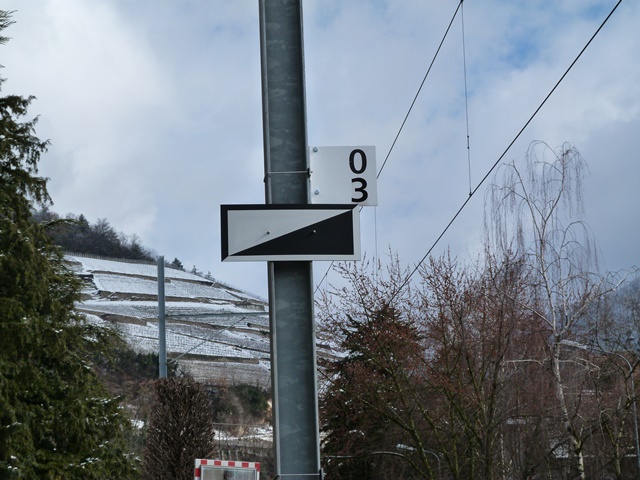 In SBB Cargo news, we're going to get our new Vectron locos starting next summer
|
|
|
|
Noosphere posted:Swiss trains will only honk or whistle in an emergency or if they pass a signal ordering them to. Same in the UK too - trains honk (technically still called a whistle) only at marked Whistle signs, the vast majority of which are at ungated or user-worked level crossings. Manned, remote controlled or automatic crossings don't require the whistle unless there's a particlar sighting issue (a curve) or there are separate road/foot traffic gates. And the whistle is just the standard quick two-tone 'hee-haw', not the American long-long-short-long from the approach until the train is in the crossing. Bells are only required on British trains for use on what are officially tramways not railways or (very rare, and now even rarer) cases of street running - these were so unusual that rather than fitting rolling stock with the required bells, side skirts, cowcatchers etc. it was easier to follow the procedures that exempted the train from those regs: a speed limit of 5mph and escorted by a pilotman on foot carrying a red flag. Talking of the 'high vis' front ends, the UK railways have only recently (2016) caught up with the rest of the world and realised that fitting bright headlamps to trains makes them easier to spot. Now, if a train has compliant lighting (three headlamps in a triangle - one high level and two low down - and two tail lamps, all of at least a certain intensity) then it doesn't need the yellow-coloured front end that has been mandated (except for steam locomotives) since the early 1960s. The idea of headlamps that actually illuminated ground/attracted attention only came to BR in the late 1970s (about a century after everyone else had sussed it out), with one central headlamp rather than the pair of low-wattage bulbs shining through a translucent screen (originally intended only to light up the headcode displayed on the front) or the little flickering oil lamps used before that.
|
|
|
|
Yeah, talking to the more experienced train drivers, it wasn't until the last 20 years or so that headlights on trains have allowed them to see much outside the cab. One of my colleagues has a story about a time someone was spotted wandering on the tracks near a tunnel. Since his lights barely allowed him to see, he had to go along at a walking pace though the tunnel, constantly expecting the person to by lying on the tracks. He said it was incredibly nerve wracking.
|
|
|
|
BalloonFish posted:Talking of the 'high vis' front ends, the UK railways have only recently (2016) caught up with the rest of the world and realised that fitting bright headlamps to trains makes them easier to spot. Now, if a train has compliant lighting (three headlamps in a triangle - one high level and two low down - and two tail lamps, all of at least a certain intensity) then it doesn't need the yellow-coloured front end that has been mandated (except for steam locomotives) since the early 1960s. I dunno. When Railtrack's administrators went bonkers after the Hatfield crash - legends of the 400-mile-long footpath along the West Coast line, and so on - even then, with three terrible crashes in rapid succession and a taxpayer-funded Make Are Railways Safe Again No Exceptions mandate, nobody was contemplating getting rid of the yellow noses. I suppose you could cynically say that the yellow snouts are for protection of shunters, depot staff and track gangs, who are just statistics compared to dead paying passengers - still, the headlight thing sounds to me more like a convenient fig-leaf explanation for 'someone's dickhead failson really hates the bright yellow, and everyone's forgotten why it's there in the first place, so whatever: baby gets his bottle'. If someone shows you a picture of a train built in the last half-century, and it has a yellow face, odds are it runs on British rails - seems a shame to throw that harmless, unique attribute in the bin.
|
|
|
|
spincube posted:I suppose you could cynically say that the yellow snouts are for protection of shunters, depot staff and track gangs, who are just statistics compared to dead paying passengers - still, the headlight thing sounds to me more like a convenient fig-leaf explanation for 'someone's dickhead failson really hates the bright yellow, and everyone's forgotten why it's there in the first place, so whatever: baby gets his bottle'. The yellow ends were originally brought in specifically for the safety of track gangs (shunting and yard engines had the black/yellow 'wasp stripes' at each end for their own purposes) to assist the P/way people (especially the dedicated watchmen for each job) spot the quieter, faster diesels and electrics. Particularly after BR painted their locos dark green which, when using only headcode discs or dim marker lamps, made them harder to see approaching between/behind trees when not accompanied by the exhaust beat and atmospheric display of a steam loco. For all sorts of H&S reasons Network Rail has been steadily moving away from the old business of doing P/way or trackside work on active running lines - the work is now more and more often done via an engineering possession so you don't have crews working away on some track, some ballast, a culvert, maintaining signals etc. while service trains thunder past a few feet away anything like as much as you did in the 1960s. So the need for visibility out on the main line is reduced. The problem of work gangs being habituated to the sound and sight of steam traction is long gone. And modern high-intensity lamps are far more visible, over much greater distances, than a first-gen diesel with a yellow-painted front end and a couple of glow-worm marker lights on the front. Research and real-world evidence (much of it from America) has shown that the triangular pattern of lamps is much better at allowing people to gauge distance and approach speed than either single or paired lamps. In the 1960s when the yellow warning ends were introduced you not only had track gangs, but crossing keepers, signalling linesmen, civil engineer inspectors etc. roaming the system on foot. You had signallers in mechanical boxes without track circuits, stations with barrow crossings (or even track level pedestrian crossings), more numerous (and more heavily used) marshalling yards and good sidings with shunters going in between wagons to (un)couple and so on. There was much more need for a clear and simple way of improving train visibility. I strongly suspect that the track is a much quieter, less populated place these days and high-intensity headlamps are just as good, if not better, than a coat of yellow paint. Most of the rest of the world, often without the UK's legally-mandated fences and gates and heavily-manned and closely-monitored system, managed with one big headlamp or two or three slightly less-big ones, and never bothered with the yellow ends.
|
|
|
|
BalloonFish posted:For all sorts of H&S reasons Network Rail has been steadily moving away from the old business of doing P/way or trackside work on active running lines - the work is now more and more often done via an engineering possession so you don't have crews working away on some track, some ballast, a culvert, maintaining signals etc. while service trains thunder past a few feet away anything like as much as you did in the 1960s. So the need for visibility out on the main line is reduced. Fair point. I still think the yellow noses look nice, though 
|
|
|
|
Zero One posted:Just keep the train on the street. No problems. It's not a Complete Street without a train lane!
|
|
|
|
spincube posted:Fair point. I still think the yellow noses look nice, though You're definitely right that they are a distinctly 'British railways' feature and make any bit of rolling stock, even if it's a standard design from a European manufacturer, look 'at home'. The Elizabeth Line trains with the black front end and the TPE locos with the two-tone blue noses look rather odd when you're so used to all trains having a yellow nose. Same as seeing Class 66s in use in Europe without them. Personal opinion, but I don't think the full yellow noses did the looks of some of the early locos and MUs any favours - English Electric stuff with the big nose like the 37s and the Deltics really look odd with the whole thing painted yellow, and the 'Heritage' DMUs looked so much smarter in the green paint with the whiskers than with the yellow end (especially in the era when the rest of them was painted all-over BR blue). Of course the yellow ends worked nicely on the Trainload sector grey livery, but that is the One BR Livery To Rule Them All, so of course it would.
|
|
|
|
BalloonFish posted:Research and real-world evidence (much of it from America) has shown that the triangular pattern of lamps is much better at allowing people to gauge distance and approach speed than either single or paired lamps. I believe it was the Canadians that first adopted the triangle and that they got it from, of all things, aircraft. Aircraft use five total lights in a pattern that only lets you see three at a time to convey everything you'd need to know about an aircraft's position and motion.
|
|
|
|
 Daily Mirror, Dec 9 1907 ChickenOfTomorrow fucked around with this message at 03:16 on Dec 18, 2023 |
|
|
|
Wow, it takes a lot of whiskey to get a spider drunk
|
|
|
|

|
| # ? May 9, 2024 09:51 |
|
TheFluff posted:I like train horns as much as the next foamer but one thing that drives me nuts about US trains is how they seem to honk at every single level crossing. Trains in the US are required to blow for every level crossing. Specifically Long, Long, Short, Long beginning a minimum of 18 seconds before they reach the crossing, and sustained until they occupy the crossing. The only exception to this is quiet zones, which have to be applied for by the municipality and require full width gates on both sides of the track, or barriers to prevent drivers from going around the gates when they are down. These must be paid for by the municipality.
|
|
|





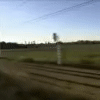










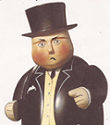







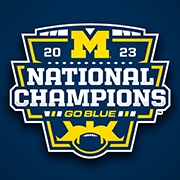





 so I could say that I finally figured out what this god damned cube is doing. Get well Lowtax.
so I could say that I finally figured out what this god damned cube is doing. Get well Lowtax.
